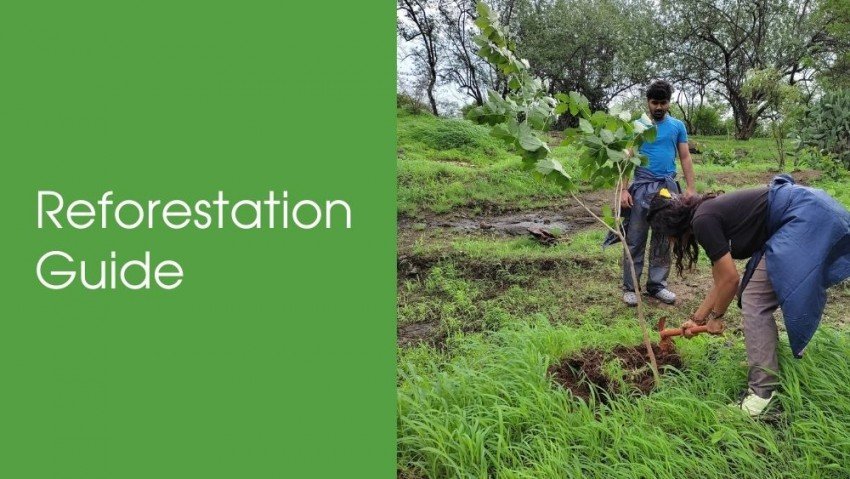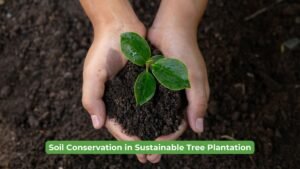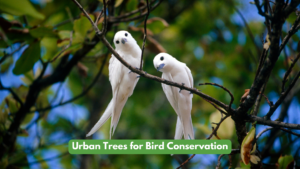Life on Earth could not survive without forests. The forests and oceans are the planet’s lungs, and they have a crucial role in the fight against climate change because they absorb 20 billion tons of CO2 annually. Forests offer the raw material for the pulp and paper industry, furniture manufacturing, and more, so the resource should be renewed.
However, Reforestation is vital not only to support industrial needs. Reforestation reverses climate change as trees consume carbon dioxide and produce oxygen. Reforestation efforts are also rewarded with improved health statistics for the Earth’s population and the environment in general. Reforestation is an important tool for reducing or reversing biodiversity loss and mitigating climate change.
Reforestation corresponds to the action of reconstituting a forest ecosystem by planting and assisting natural regeneration after a cut of human origin or a natural hazard. It is the result of multi-actor cooperation, particularly at the local level, and aims to restore a multifunctional forest based on biodiversity through different tree species, which will offer a wide range of ecosystem services for the well-being of all living organisms, particularly humans.
As a complement to the fight against deforestation, it is intended to be the best natural solution to preserve and strengthen biodiversity and combat climate change. By helping to limit global warming, Reforestation thus indirectly contributes to limiting drought phenomena, notably at the root of forest degradation. Other tree plantations contribute to these diverse objectives, such as afforestation (planting trees in an area that has never been forested or not since a long time), urban forest plantations or wooded biological corridors in cities, or agroforestry. In intertropical zones such as the Amazon, the latter offers a sustainable alternative to the agro-industry that causes deforestation and thus contributes directly to the fight against deforestation.
How Reforestation helps the environment
By planting trees in areas that have been deforested or degraded, Reforestation helps the environment by guaranteeing or accelerating the re-establishment of healthy forest structure by regrowing the forest canopy and preserving biodiversity within the ecosystem.
New forests help prevent soil erosion or desertification; they are crucial to secure buildings and fields from winds. Trees along river banks or shorelines fortify and stabilize the coastal area. In addition, woods are natural habitats for unique species, which sometimes cannot be found anywhere else. This is why it is vital to regenerate the degraded or destroyed areas and plant new ones to refresh the tree cover.
Reforestation also applies to restore destroyed forests after natural calamities like fires, floods, earthquakes, etc. Furthermore, this technique is also used to recover forests due to artificial interventions such as mining, archaeological site deployment, or construction. Thus, Reforestation is an efficient method to tackle deforestation and improve the ecological situation. When carried out efficiently, reforestation projects make it possible to sustainably restore ecosystems and make them more resilient to climatic conditions.

Process of Reforestation
Planting takes place two ways, either naturally or artificially. The natural reforestation process relies on rooting seeds and sprouts from nearby trees without human assistance. Yet, natural Reforestation is insufficient and should be supported by other techniques when tree replacement involves the participation of people.
Reforestation is a routine operation for designated forest farms. The approach combines Reforestation with deforestation when forests are cut in a way that helps to establish new ones. The idea is to turn the end into the beginning whenever possible.
There are two classification options of reforestation techniques, depending on the age of co-existing trees:
- even-aged stands – mature overstory is removed to let the new stand grow;
- uneven-aged stands – older and younger trees grow together.
The choice depends on whether the species can grow in shelter or not and the climatic peculiarities of the region. Deforestation gives rise to new tree stands when the remaining mature trees promote new generations. They provide seeds, wildlife habitats, and shelter from excessive sunlight or wind.
Even-Aged Methods
The even-aged system is used to offer adequate sunlight for saplings. It includes clear-cutting, seed trees, and shelterwood options. Clear-cutting is the complete removal of mature overstory to let new trees grow. However, some trees may be preserved as a shelter for wildlife. This is a popular reforestation method to regenerate yellow poplar, white birch, red and white oak, jack pine, etc.
Uneven-Aged Methods
The uneven-aged system suggests cutting a group of trees or separate trees, offering space for a new stand. The area size in group cuts differs by width and can reach two heights of mature trees. The width depends on the amount of light the species require. Spruce, fir, maple, and hemlock can tolerate shade and will do with a smaller opening. The group selection covers the whole forest tract.
How to carry out Reforestation
It would help if you had a plan to reforest a piece of land spoilt by indiscriminate felling, fires, or climate change. Reforestation needs to be sustainable; in other words, it is not just a question of planting trees here and there; let’s look at some essential aspects.
1. Site study
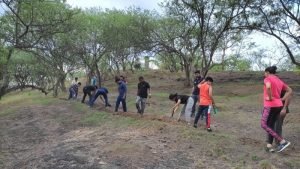
First of all, the land must be analyzed, and the conditions of the area must be checked: from the soil depth, texture, and fertility – to the climate – dry or wet season (there must be moisture) – and the type of local fauna and flora that live in the ecosystem.
2. Choose a species to plant
It is recommended to plant local species, but it is also acceptable to include fast-growing species compatible with the soil and the climate. It is crucial to have suitable quality forest germplasm; ideally, the nursery of origin should be no more than 100 kilometers away. The manner and time at which the trees are transported are also essential to avoid the heat of the sun and strong wind.
3. Select a planting method
First, prepare the soil, use the right tools and opt for the least invasive technique. Tree height and coverage of each new plant must be considered, so they do not interfere with each other. The plantation does not end with the forest germplasm but must include a follow-up plan.
4. Set up a protection plan
The follow-up plan must specify how to secure the reforested area from threats of disease, infestation, fire, and illegal logging. Maintenance and assessment are crucial to ensure Reforestation.
Importance of Reforestation
Forests serve numerous vital purposes: They create the oxygen we need to breathe. They offer us beautiful places to visit. They support thousands of plant and animal species. Below are a few reasons it is essential to conserve and protect forests.
Biodiversity
Forests are home to an incredible array of species: 60,000 diverse types of trees, plus 75% of birds, 80% of amphibians, and nearly 70% of mammals can be found in forests. This biodiversity makes forests stronger and more resilient, allowing them to withstand disease and insect infestations better and regenerate more quickly after a disaster. In addition, the replanting of trees encourages the return of wildlife and, thus, biodiversity. Reforestation can also be used to plant rare or endangered trees, helping them make a comeback.
Soil erosion reduction
Soil erosion is caused by strong winds, hard rains, and flowing water. In some cases, it’s a natural process, but when it occurs too quickly, it can lead to flooding, increased pollution, and sedimentation of rivers. Trees can protect from erosion and flooding by absorbing and distributing this water. A single evergreen can intercept up to 15,000 liters of water a year.
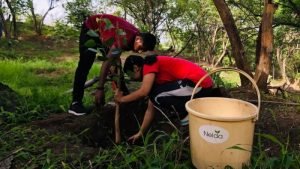
Carbon sequestration
One of the most crucial functions of forests is to absorb carbon dioxide and create fresh oxygen. The larger the forest, the more carbon dioxide is removed from the atmosphere. In Reforestation, this is called carbon sequestration. It is estimated that a tree can absorb an average of 9 kilograms of carbon a year for the first 20 years of its life.
Economic growth
Reforestation benefits communities as well. During the planting process, jobs are created to prepare the land, plant the trees, and monitor the growing process. When the forests reach maturity, they could be used for future education, tourism, or recreation. One research found that every $1 million invested in Reforestation creates 17 jobs for the local economy – a rate similar to other conservation projects and higher than industries like coal and gas.
Fighting global warming
Trees help to reduce the amount of carbon dioxide in the air and significantly decrease the presence of toxic gases like methane. So only through planned reforestation, the effects of deforestation can be checked and global warming can be reduced. Carbon given out from burning fossil fuels is absorbed by the forests.
Water quality
Soil doesn’t just offer a place for trees to take root. It stores and filters water, helping improve the water quality of nearby rivers and lakes. Trees create healthy soil by keeping it from becoming compacted. Compacted soil doesn’t filter or store water or loose, aerated soil. As a result, forests absorb polluting chemicals that may otherwise make their way into the water supply.
Reforestation Management
Reforestation effects become more effective with proper management. So, it is vital to develop a reforestation plan, depending on the purpose of Reforestation (restoration after illegal deforestation, harvesting, wildfires, etc.). With different purposes, the best trees for Reforestation will be different, too. One species are the most carbon-absorbing, while others are the fastest-growing. Some better fit the established ecosystem. In other words, there is no universal answer to this question.
Another discussion point is whether or not Reforestation can restore the ecosystem of the last forest. Here it depends on the species. Remote sensing makes reforestation management and monitoring more accessible, especially in hard-to-reach places. With satellite imagery, foresters can monitor reforestation progress, timely notice if things go wrong, and react accordingly.

Reforestation Practices for the Future
Reforestation is one of the best opportunities to fight against carbon levels and climate change. Advantages like improved air quality, water resources, and enhanced soil conditions are some of the reasons we should consider Reforestation as a conservation method moving into the future. Plus, natural habitats can be restored, boosting biodiversity in areas that have been affected by deforestation due to wildfire or human activity.
The practice of planting trees has been around for some time, and now we need to expand Reforestation on a global level to reach several trees that can help us restore tree concentrations worldwide.
While our focus here at Nelda is to plant trees where they are needed most and where they can make a range of positive impacts, we recognize that our mission is one part of a larger picture. Not only is it vital to secure existing forests and plant new ones to create a net positive global benefit, but education, research, public involvement, inspirational leadership, and community-based initiatives are all interconnected components of the greater mission we are all a part of.
If we wish to see a greener world, we must work together. So, connect with us today to know more about the initiatives we intend to take forward this year.

